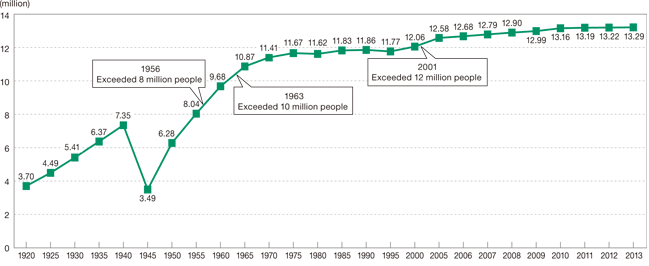Tokyo's Population History
In 1920, the population was 3.70 million. Twenty years later, in 1940, 7.35 million. In 1945, the population decreased to 3.49 million, the year World War II ended. From 1945 to 1965, the population increased much more than before, by adding a couple million every year from a higher rate of birth than normal to recover from the war. By doing this, Tokyo exceeded 10 million people in 1963, making it a megacity. After this, the population increase is by much smaller numbers, going up by a few thousand people rather than adding a mass amount of people to the already large population. By 2013, there is over 13 million people in Tokyo.
In Japan, the majority of the population lives
in Honshu, the largset island in Japan. There
are little amounts of people, 0-100, living
in Hokkaido, the island in the north. The most
densly popualted areas with 1000-5514 people in
Japan are those on the coastal regions on the
eastern side, however one on the western side.
The map shows that the most densly populated
areas are those facing the east sea, whereas
the central areas of Japan have 100-200 people
living there per square kilometre.

